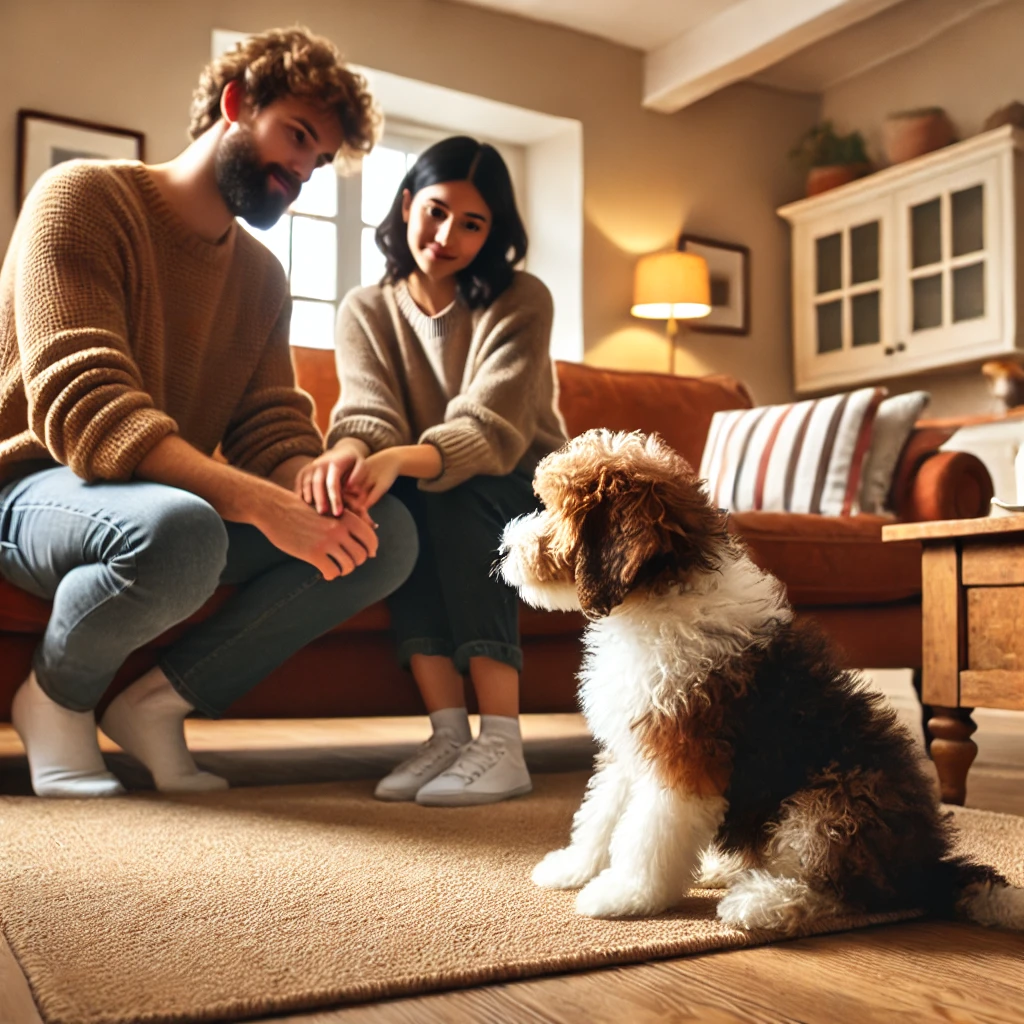Pets can be sensitive to changes and new people, making this encounter crucial for long-term harmony. If you’re considering expanding your family, Mini Bernedoodle puppies that are available can be a wonderful addition. This blog post will explore strategies to ensure a smooth transition and foster a bond between your pet and your partner from the outset.
Understanding Pet Personalities
Every pet has a unique personality, influencing how it responds to new faces. Some pets are naturally sociable and curious, while others may be more reserved or anxious. Recognizing these traits helps tailor the introduction to suit your pet’s comfort level. Knowledge of past interactions can provide insights into possible reactions.
Consider your pet’s history with strangers as you plan this introduction. Positive past associations can ease the transition. Conversely, if your pet has been wary of newcomers, take extra steps to create a reassuring environment.
Preparing the Environment
Creating a welcoming space is essential for a successful introduction. Ensure your pet’s comfort zone, such as their favorite room or spot, is accessible. This space is a haven during initial interactions, allowing your pet to retreat if feeling overwhelmed. Minimizing stressors is also crucial when introducing a new person.
Remove potential triggers or distractions, such as loud noises or unfamiliar objects. A calm environment encourages positive, stress-free interactions. Consider using familiar scents, like your partner’s clothing, before the meeting to acclimate your pet to their presence.
First Impressions Matter
The first meeting between your partner and pet sets the tone for future interactions. Keep the initial encounter brief and low-pressure. Allow your pet to approach at their own pace, promoting a sense of control and comfort. Encourage your partner to remain calm and relaxed, avoiding sudden movements or loud noises.
Communicate with your partner about respecting your pet’s boundaries, emphasizing the importance of patience. Reinforce positive behavior with treats and praise, creating a positive association with your partner’s presence. Repeated exposures will foster a growing sense of familiarity.
Building Trust Gradually
Trust takes time to develop, so patience is key when integrating your partner into your pet’s life. Encourage your partner to engage in regular, positive interactions with your pet. Activities like feeding, walking, or playtime allow them to bond naturally. Observing these interactions strengthens your pet’s trust and acceptance.
Facilitate gradual increases in interaction length over time. This approach prevents overwhelming your pet and ensures their comfort remains a priority. Monitor your pet’s body language for signs of distress, adjusting the pace to maintain a positive experience.
Managing Potential Challenges
Despite best efforts, challenges may arise in building a relationship between your partner and pet. Be prepared to address issues such as jealousy or territorial behavior. Consistency and clear boundaries are crucial in overcoming these obstacles. Enlist professional help if necessary.
A qualified trainer or behaviorist can provide tailored strategies to address specific concerns. Open communication with your partner about any difficulties ensures a team approach to resolving them. With the right support, challenges can be navigated successfully.
Encouraging Positive Reinforcement
Positive reinforcement is powerful in nurturing a harmonious relationship between your partner and pet. Reward your pet for displaying calm, friendly behavior around your partner. This reinforcement creates a strong, positive association. Use treats, praise, or affection as rewards.
This approach motivates your pet to continue welcoming your partner warmly. Consistency in rewarding desired behaviors is key to reinforcing positive interactions. Over time, these reinforced behaviors will become natural responses.
Creating Shared Rituals
Incorporating shared activities and rituals strengthens the bond between your partner and pet. Establishing a routine involving your pet helps them feel secure and included in your partnership. Shared meals, walks, or playtime are opportunities for connection.
These rituals also structure your pet’s day, creating predictability and comfort. Encourage your partner to actively participate in these activities actively, fostering a genuine relationship with your pet. Over time, these shared experiences become cherished memories.
Handling Setbacks with Grace
Setbacks may occur during this transitional period, but handling them gracefully is essential. If your pet exhibits anxiety or rejection, remain patient and understanding. Avoid forcing interactions, as this may exacerbate stress.
Take a step back and reassess the situation, identifying potential triggers. Gradual reintroduction at a slower pace may be necessary. Remember that pets, like our adorable Mini Bernedoodle puppies available, are unique and may require different approaches to adjust comfortably.
Strengthening Communication
Effective communication between you, your partner, and your pet is crucial for a harmonious coexistence. Encourage open discussions with your partner about observations and concerns. Sharing insights about your pet’s behavior fosters understanding and collaboration.
Together, develop strategies to address any issues that may arise. This partnership in communication ensures a unified approach to nurturing the bond between your partner and pet, promoting a harmonious home environment.
Monitoring Progress
Regularly assess the progress of your partner and pet’s relationship. Celebrate milestones, regardless of size, as indicators of growing comfort and trust. Documenting these moments provides perspective on how far they’ve come.
If setbacks occur, revisit successful strategies employed previously. Flexibility and adaptability are key to overcoming challenges. Continued attention to progress strengthens the foundation of the relationship.
Conclusion
Introducing your new partner to your pet can be a rewarding experience. With patience and understanding, you can nurture a loving and harmonious relationship. If you want to expand your family. Additionally, exploring Mini Bernedoodle puppies for sale might be a great option. If challenges arise, seeking professional guidance can be beneficial, and it’s important to celebrate each milestone along the way. This process ultimately strengthens the bond among everyone involved.













